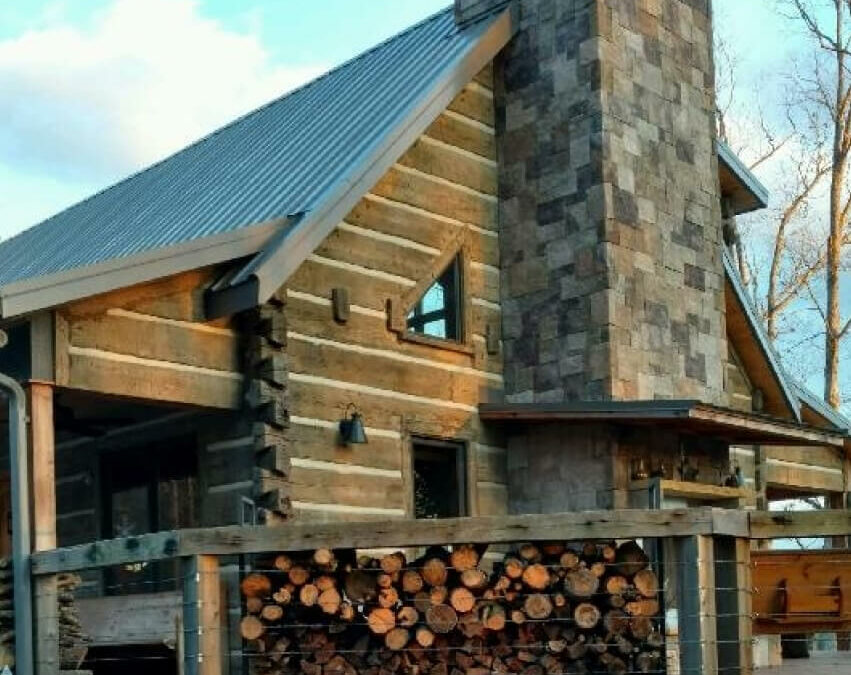Log cabin style siding is a popular choice for homeowners who want to add a rustic, natural look to their homes. This type of siding not only enhances the aesthetic appeal of a house but also provides excellent durability and insulation. In this article, we will explore the different aspects of log cabin style siding, including its aesthetic appeal, durability, different types available, materials used, installation process, and maintenance and care tips.
Understanding Log Cabin Style Siding
Log cabin style siding is designed to replicate the look of traditional log cabins. It brings a touch of nature to any home and creates a warm, inviting atmosphere. This siding is typically made from logs or log-shaped panels that are installed on the exterior walls of a house. There are various reasons why homeowners choose log cabin style siding, from its unique aesthetic appeal to its durability.
When it comes to log cabin style siding, the craftsmanship and attention to detail play a significant role in achieving an authentic look. Each log or panel is carefully selected and installed to create a seamless and natural appearance. The installation process requires skill and precision to ensure that the siding not only looks beautiful but also functions effectively in protecting the home from the elements.
The Aesthetic Appeal of Log Cabin Siding
One of the primary reasons people opt for log cabin style siding is its natural and timeless beauty. The logs or log-shaped panels create a rustic charm that complements a wide range of architectural styles, from traditional to modern. The texture of the wood, along with its rich colors, adds depth and character to the exterior of a house. Log cabin siding can give your home a unique and stand-out look in the neighborhood.
Furthermore, the natural aging process of the wood used in log cabin siding adds to its appeal over time. As the wood weathers, it develops a beautiful patina that enhances the rustic feel of the siding. This natural evolution of the material gives each home a distinct character that cannot be replicated with artificial materials.
The Durability of Log Cabin Siding
Aside from its aesthetic appeal, log cabin siding is known for its exceptional durability. The logs are treated to withstand harsh weather conditions, including extreme heat, cold, and moisture. This type of siding can last for many years without showing signs of wear and tear. Its durability also makes it resistant to pests and insects, ensuring the longevity of your home’s exterior.
Moreover, the insulation properties of log cabin style siding contribute to energy efficiency in homes. The natural thermal mass of the logs helps regulate indoor temperatures, reducing the need for excessive heating or cooling. This not only benefits the environment by lowering energy consumption but also saves homeowners money on utility bills in the long run.
Different Types of Log Cabin Siding
There are different types of log cabin siding available in the market. Each type offers a unique look and has its own set of advantages. Here are three popular options:
Full Log Siding
Full log siding is made from whole logs that are cut longitudinally to create a flat backside. This type of siding provides an authentic log cabin look, with the logs extending from the foundation to the roofline. It offers excellent insulation and can create a cozy and natural feel inside the house. Full log siding is ideal for those who want a traditional log cabin aesthetic.
Half Log Siding
Half log siding is created by attaching log-shaped panels to the exterior walls of a house. These panels mimic the appearance of full logs, with one side being rounded and the other side flat. Half log siding offers a more affordable option compared to full log siding without compromising on the rustic appeal. It is a versatile choice that can suit a variety of architectural styles.
Quarter Log Siding
Quarter log siding is similar to half log siding, but the log-shaped panels are thinner. This type of siding provides a more subtle log cabin appearance while still enhancing the overall look of a house. It is a popular choice for homeowners who desire a touch of rustic charm without the full log cabin effect.
Materials Used in Log Cabin Siding
Log cabin siding can be made from different materials, each having its own benefits. Here are two commonly used options:
Wood Species for Log Cabin Siding
Wood is the most traditional material used for log cabin siding. Various wood species are suitable for this type of siding, including pine, cedar, and cypress. Each wood species has its own unique characteristics and durability. Wood siding requires regular maintenance, such as staining and sealing, to protect it from moisture and maintain its appearance.
Synthetic Materials for Log Cabin Siding
In recent years, synthetic materials have gained popularity as an alternative to wood. These materials, such as fiber cement and vinyl, offer excellent durability and require less maintenance compared to traditional wood siding. Synthetic log cabin siding is engineered to mimic the natural beauty of wood while providing enhanced resistance to weathering, rot, and pests.
Installation Process of Log Cabin Siding
The installation process of log cabin siding is crucial for achieving a flawless and long-lasting result. Here is an overview of the installation procedure:
Preparing for Installation
Prior to installing log cabin siding, the existing exterior walls need to be inspected and prepared. This includes checking for any rot or damage and ensuring the walls are clean and dry. Additionally, all windows, doors, and other openings should be properly trimmed to accommodate the siding panels.
The Installation Procedure
Once the preparation is complete, the log cabin siding panels are installed row by row. The panels are secured to the walls using screws or nails, strategically placed to ensure stability and prevent warping. Careful attention is given to aligning the panels and maintaining consistent spacing. Trim pieces are installed around windows, doors, and corners to create a seamless finish.
Maintenance and Care for Log Cabin Siding
To keep your log cabin siding looking its best and prolong its lifespan, regular maintenance and care are essential. Here are some tips:
Regular Cleaning and Inspection
Clean the log cabin siding periodically by using a soft brush, mild detergent, and water. Avoid using abrasive cleaners or tools that can damage the surface. Regular inspection is also important to identify any potential issues, such as rot, decay, or loose panels. Addressing these problems promptly can prevent further damage.
Sealing and Staining Log Cabin Siding
Sealing and staining the log cabin siding helps protect the wood from moisture, UV rays, and other environmental elements. Apply a high-quality wood sealer and stain according to the manufacturer’s instructions. This process should be done regularly to maintain the integrity and appearance of the siding.
In conclusion, log cabin style siding offers homeowners a range of options to enhance the aesthetic appeal and durability of their homes. Whether choosing full log siding, half log siding, or quarter log siding, the natural beauty and timeless charm of log cabin siding can transform any house into a cozy retreat. With proper installation and maintenance, log cabin siding can withstand the test of time and provide lasting enjoyment for homeowners.
Transform Your Home with Smart Logs of the Carolinas
Ready to elevate your home with the durability and charm of log cabin style siding? Smart Logs of the Carolinas offers concrete log siding that captures the essence of traditional wood logs while providing unparalleled resistance to insects, weather, and time. Our environmentally friendly logs are ideal for both new constructions and existing structures, offering a fire-resistant, low-maintenance, and cost-effective solution. With Smart Logs, you’ll enjoy the beauty of authentic hand-hewed logs without the worry of warping, settling, or rotting. Plus, our logs are simple to install and energy efficient, helping you save on insurance and preserve natural resources. Don’t settle for less; choose Smart Logs for a timeless appeal that’s built to last. Contact Us! today to start building your dream home with Smart Logs of the Carolinas.

